This gluten-free lemon olive oil cake is moist, tender and fragrant with citrus lemon, and covered in a lemon icing to make it more decadent (optional, but highly recommended!). Perfect for breakfast, dessert, or an anytime sweet snack! Totally dairy-free too, but no one would care!
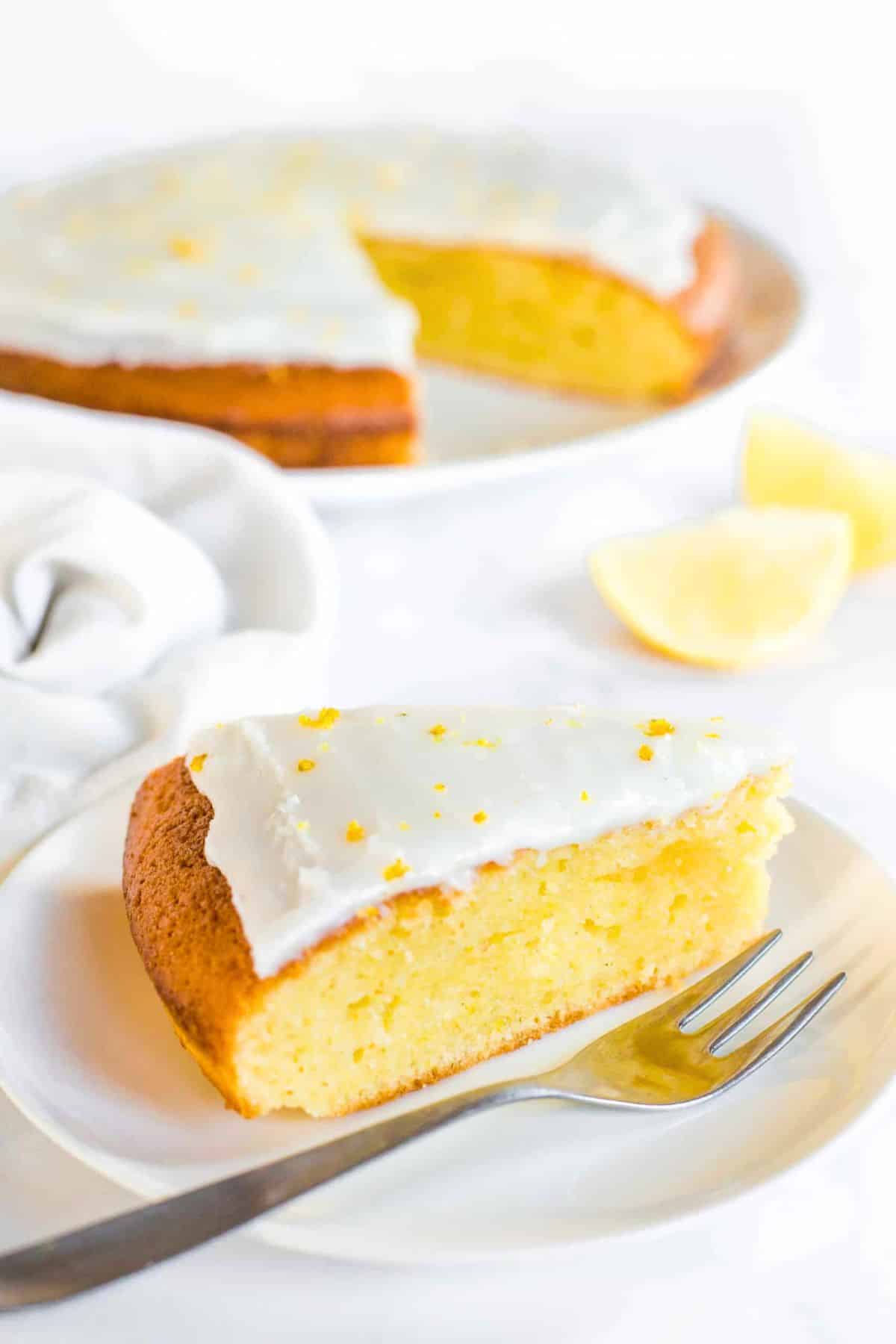
Want to save this recipe?
Enter your email & I’ll send it to your inbox. Plus, get great new recipes from me every week!
Jump to:
- My First Memory of Baking
- Gluten-Free Olive Oil Cake
- Why This Recipe Works:
- Ingredients You’ll Need:
- Ingredients For the Lemon Frosting (Optional):
- Recipe Notes + Substitutions
- How to Make Gluten-Free Olive Oil Cake (Step by Step):
- Dish by Dish Tips/Tricks:
- Recipe FAQs:
- Gluten-Free Lemon Recipes to Enjoy:
- Gluten-Free Cakes to Bake:
- Other Lemon Desserts You’ll Love:
- Gluten-Free Lemon Olive Oil Cake (Dairy-Free)
My First Memory of Baking
If you asked me how baking first entered my life, I’ll have to tell you that my first memories of baking involved a pound cake.
More specifically, it involved me sitting by the kitchen door when we were still living in the red brick house on Sea Breeze Road: me watching as my mum made her version of pound cake, with decadent amounts of butter, vanilla essence and freshly grated orange zest, which left the house lingering with a fragrance like that on your fingers after you’ve peeled an orange, only a whole lot stronger.
I don’t remember much about the process of assembling the ingredients and eventually popping the batter into the oven.
I was honestly more interested in the final outcome: a glorious loaf, golden brown on the outside and then once greedily sliced open, showed off a bright yellow crumb threaded with tiny bits of grated orange zest.
To my young mind and hungry stomach, the cake met all the pre-requisites to be considered delicious – it was fragrant, with a taste that would match or even beat the aroma, and it had texture but was moist at the very same time.
Because of the memories that pound cake brings to my mind, any cake that is vaguely similar to a pound cake, especially one that takes me back to my childhood, is dear to me.
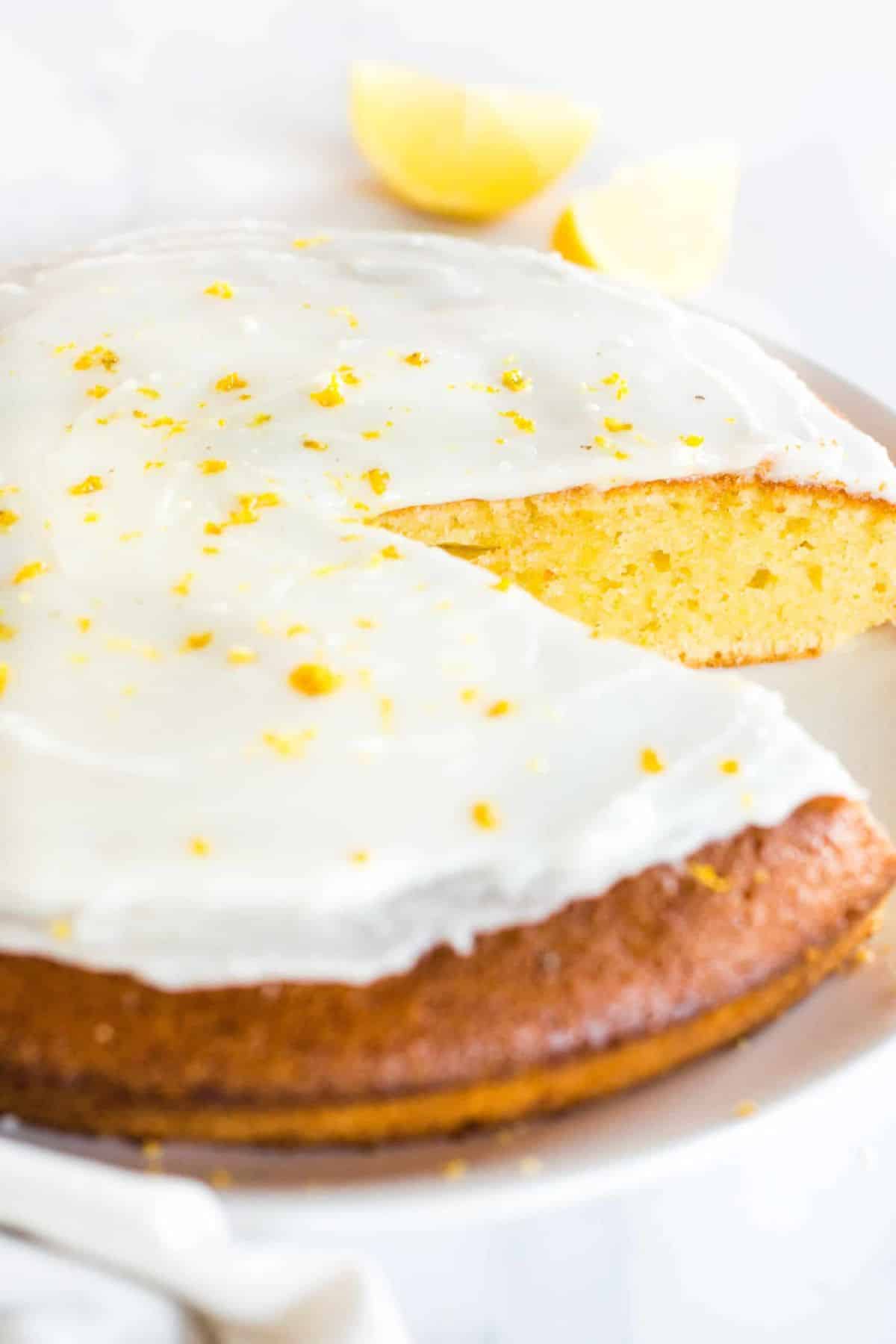
Gluten-Free Olive Oil Cake
Since Juan became lactose-intolerant, I’ve made plenty of cake and pound cake with different types of vegetable oils instead of butter (or sometimes I also use vegan butter). So it’s only natural that at some point, I would venture into making an olive oil cake.
Long ago, I’d always thought that olive oil was to be used only in savory recipes – you know, to dip breads in, or for cooking. But then I saw Lan’s calamansi olive oil bread a few years back, I immediately thought of making it, but with lemon instead.
Using olive oil not only adds a unique flavor to the cake, but also ensures that the cake is moist and tender. Never baked with olive oil before? You’re going to love this recipe!
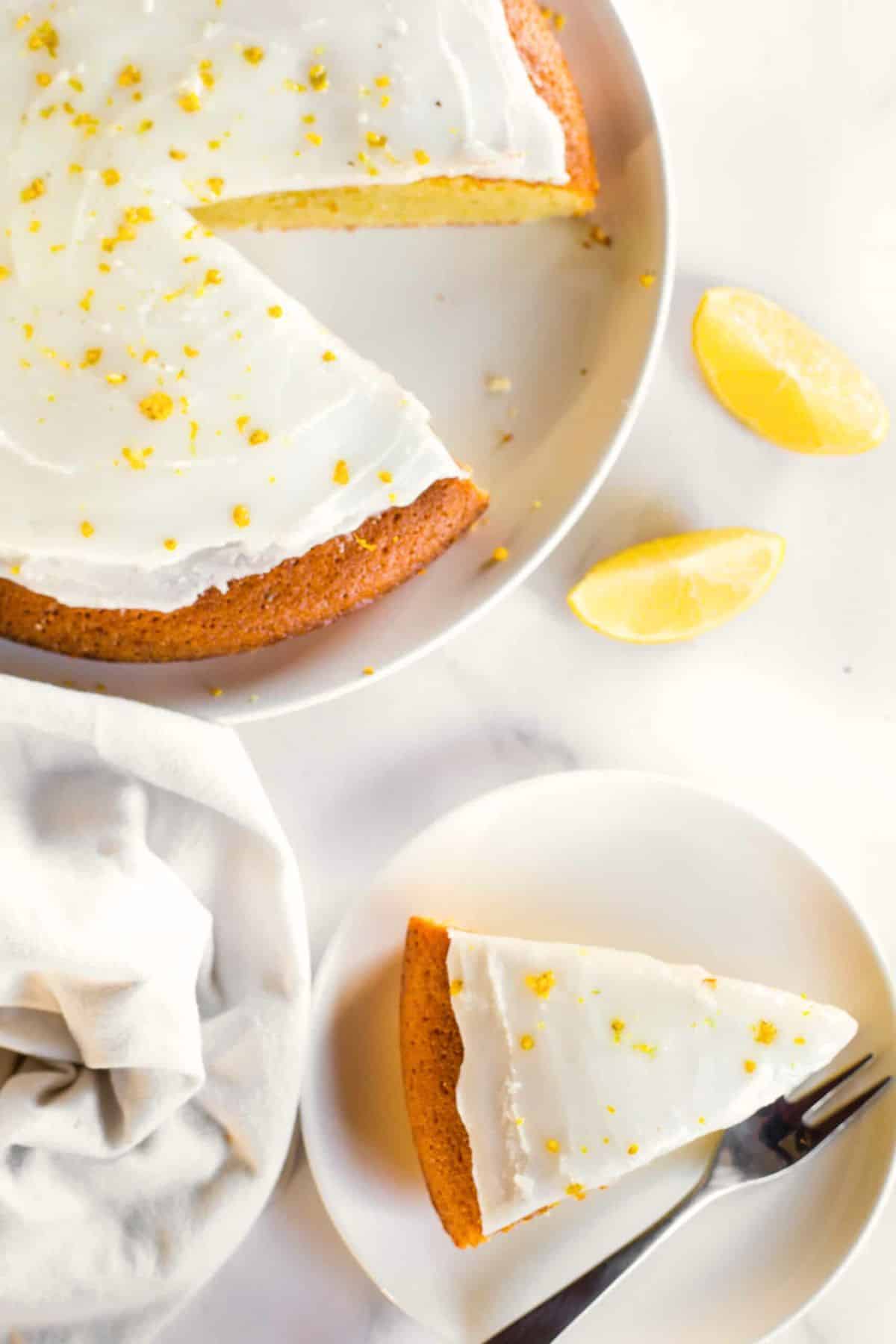
Why This Recipe Works:
- Simple Ingredients: The ingredients required for this tender olive oil lemon cake are easily accessible at the local grocery store (nothing fancy needed!).
- Super Easy to Make: Preparing the batter for this full-size cake is really just a matter of mixing wet and dry ingredients together, then baking it until golden on top! Then spread with a tart and sweet lemon frosting for the final touch!
- Perfectly Moist and Flavorful: With a really moist crumb; there is a subtle hint of olive oil, but the bright lemon flavor really shines. Plus, this cake is glazed with a lemon icing that adds extra sweetness and tartness! Perfect with a cup of coffee or tea.
- Totally Gluten-Free and Dairy-Free: The best part is that this lemon cake recipe is 100% gluten-free and dairy-free, which means that even those with Celiac disease or gluten or lactose intolerances can enjoy this simple cake without issues!
Ingredients You’ll Need:
Here’s a visual overview of the ingredients required for this delicious gluten-free olive oil cake.
(For exact measurements, please scroll down to the printable recipe card at the bottom of this post.)
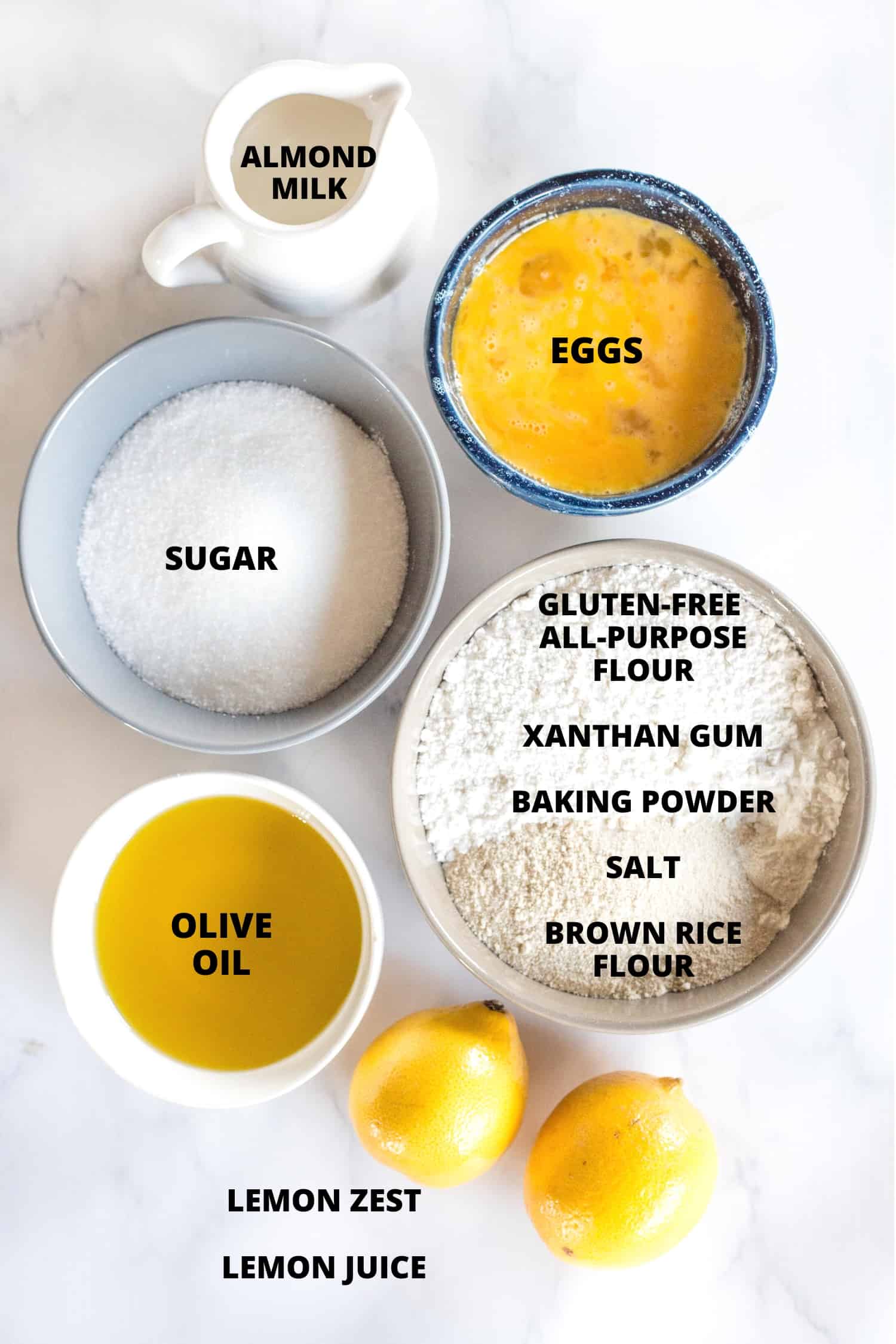
Ingredients For the Lemon Frosting (Optional):
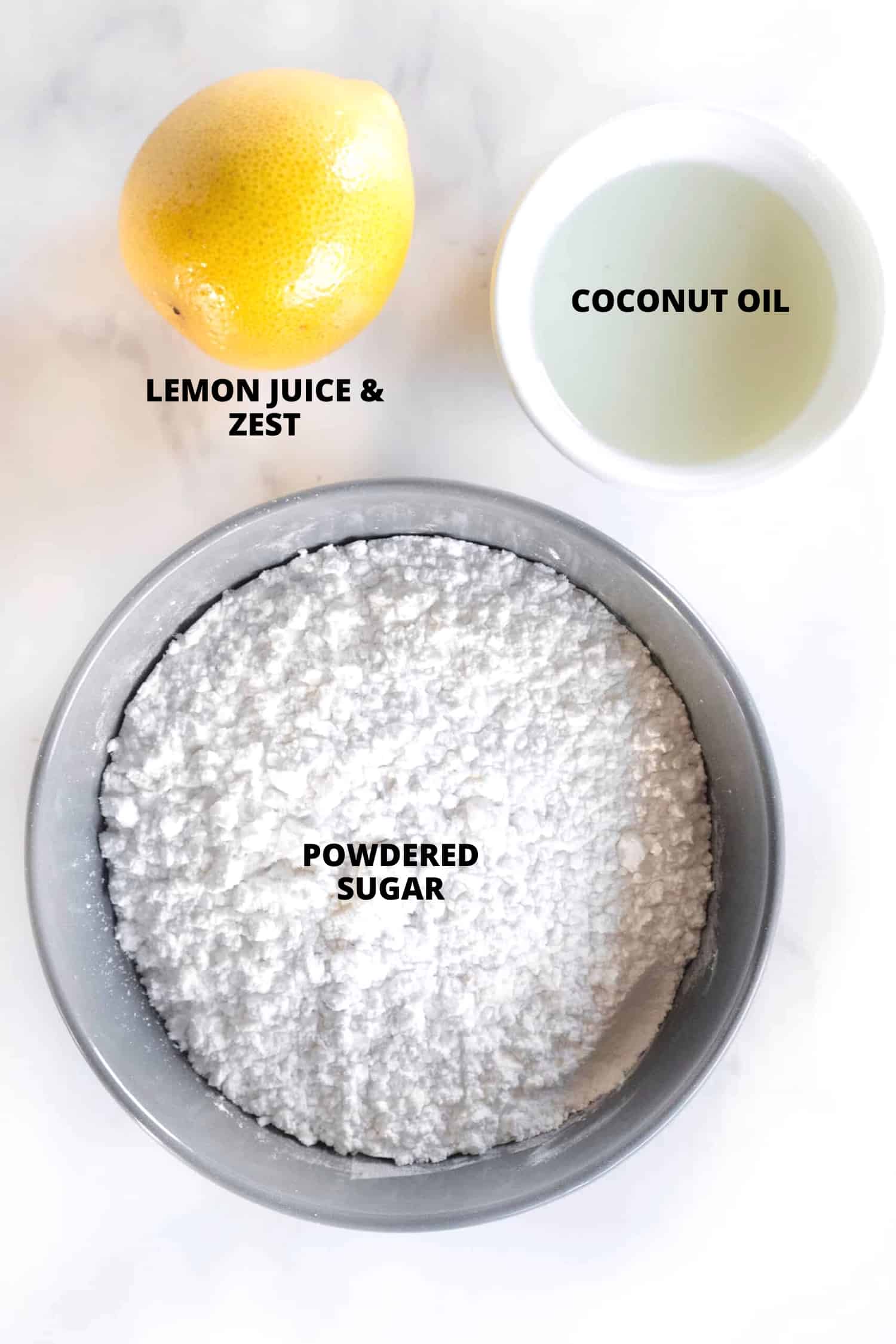
Recipe Notes + Substitutions
- Gluten-Free All-Purpose Flour: I recommend using a good-quality gluten-free all-purpose flour blend that is made up of lighter flours/starches (such as rice flour, tapioca starch, corn starch or potato starch) to ensure a lighter final texture. I do NOT recommend using a gluten-free flour blend that is made up of heavier flours (such as a garbanzo bean flour) as that will result in a denser final texture.
- Brown Rice Flour: I like adding a bit of brown rice flour for a bit more fiber and texture.
- Xanthan Gum: Xanthan gum is the replacement for gluten in gluten-free flours, and helps to better bind the ingredients together. Make sure to add it in if your gluten-free flour blend doesn’t already include it.
- Baking powder: Since baking powder is the only leavening agent that will be used, make sure to add it in. If you are Celiac or gluten-intolerant, make sure to use certified gluten-free baking powder.
- Olive Oil: Since olive oil is a key ingredient, make sure to use a good olive oil. I used extra virgin olive oil, but you can use a lighter olive oil or regular olive oil if you don’t want to taste to be overpowering.
- Sugar: I used white sugar, but you can also use light brown sugar if you prefer. If you are diabetic or insulin-resistant, I highly recommend using granulated monkfruit sweetener (a 1:1 sugar substitute that is zero glycemic index and will not raise your blood sugar.)
- Lemon Zest: Using freshly grated lemon zest will really make the citrus lemon taste shine.
- Eggs: Eggs help to bind the ingredients together. I have not tried making this recipe without eggs, so I don’t know how it would turn out. However, if you are allergic to eggs, you can try using acquafaba or an egg-replacer instead.
- Almond Milk: I like using an unsweetened version of my homemade almond milk, but you can also use another non-dairy milk (such as cashew milk, rice milk, tigernut milk, light coconut milk). Alternatively, if you are not lactose-intolerant, go ahead and use normal milk instead.
- Lemon Juice: Fresh lemon juice will beat bottled lemon juice anytime, and since you need fresh lemons for the lemon zest, I recommend using freshly squeezed lemon juice.
- Coconut Oil: I recommend using refined coconut oil (which has a more neutral taste) instead of extra virgin coconut oil (which has a stronger coconut smell and flavor). You may also use melted vegan butter instead. Alternatively, if you are not lactose-intolerant, feel free to use melted butter as well.
- Powdered Sugar: Make sure to use powdered sugar (also known as icing sugar or confectioners’ sugar) as it is super fine and results in a creamy frosting. If you are diabetic or insulin-resistant, I recommend using powdered monkfruit sweetener (a 1:1 powdered sugar substitute that is zero glycemic index and will not raise your blood sugar).
How to Make Gluten-Free Olive Oil Cake (Step by Step):
1. Preheat and Grease
Preheat the oven to 350F and grease and line the bottom of a 9″ round cake pan or springform pan with parchment paper.
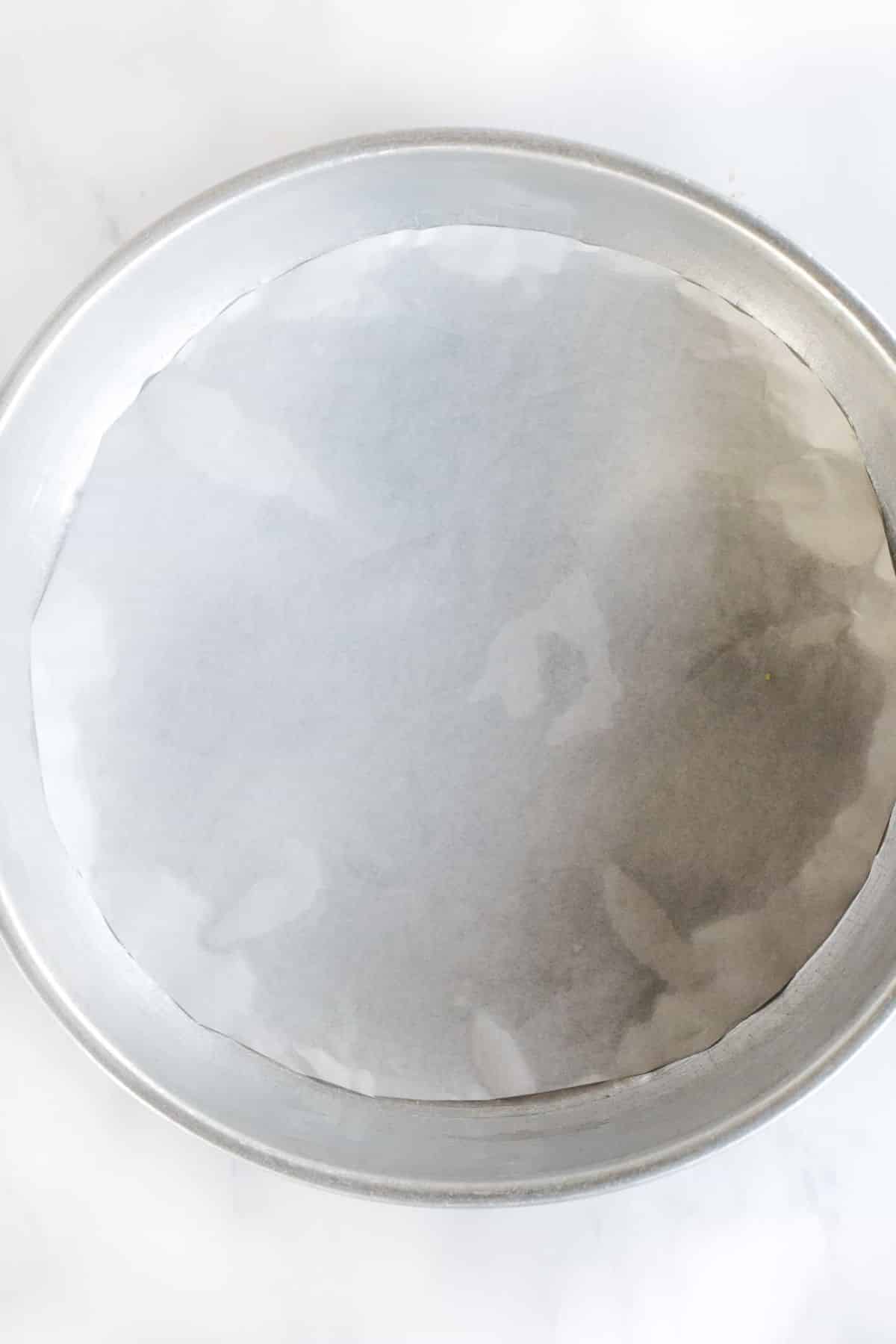
2. Whisk Dry Ingredients
In a large mixing bowl, sift the gluten-free all-purpose flour, brown rice flour, xanthan gum, salt and baking powder. Whisk well to combine.
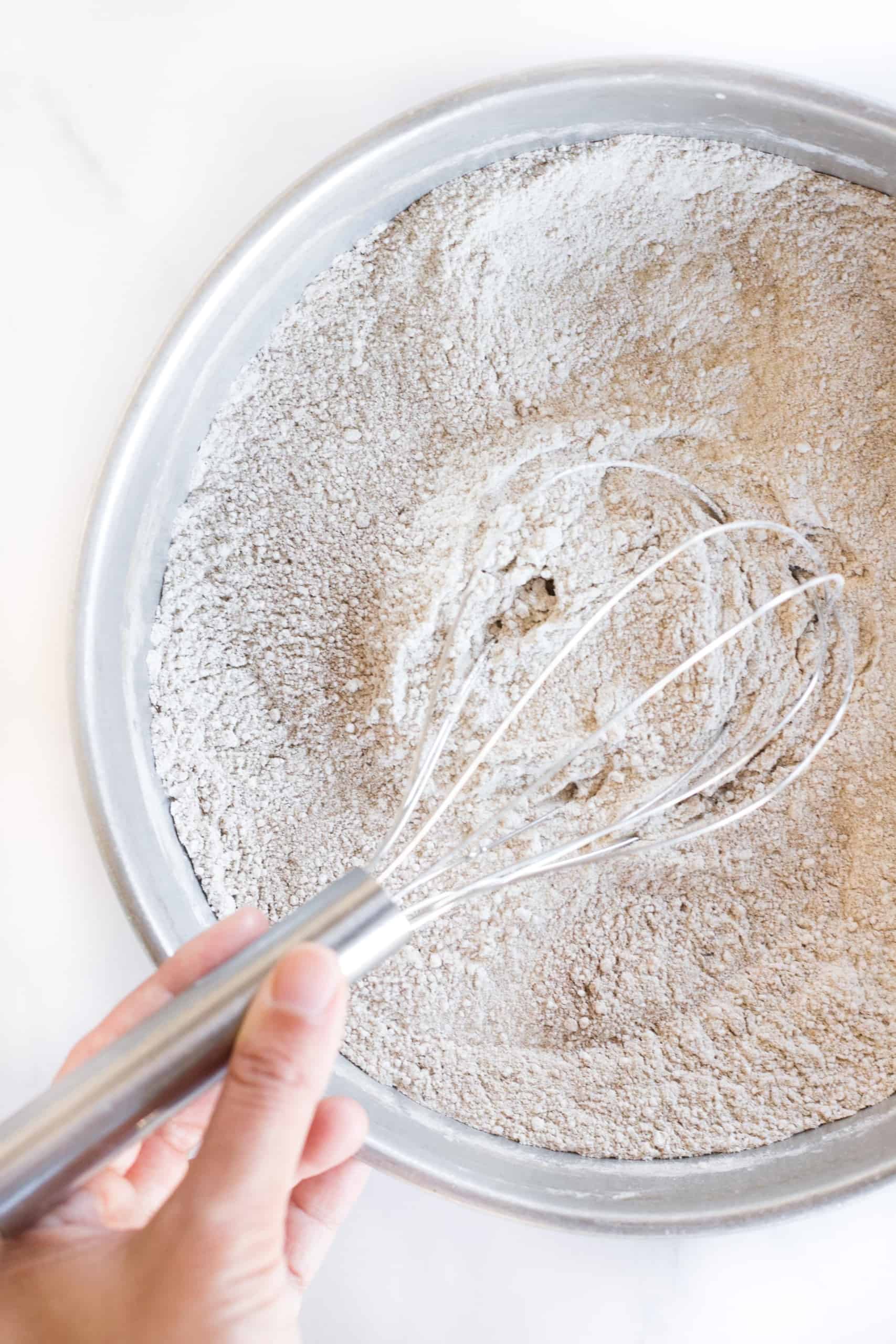
3. Beat Oil, Sugar and Zest
In another large bowl, combine the oil, sugar and lemon zest. Beat well until light and fluffy.
4. Add Remaining Wet Ingredients
Add the eggs, almond milk and lemon juice, and whisk well to combine.
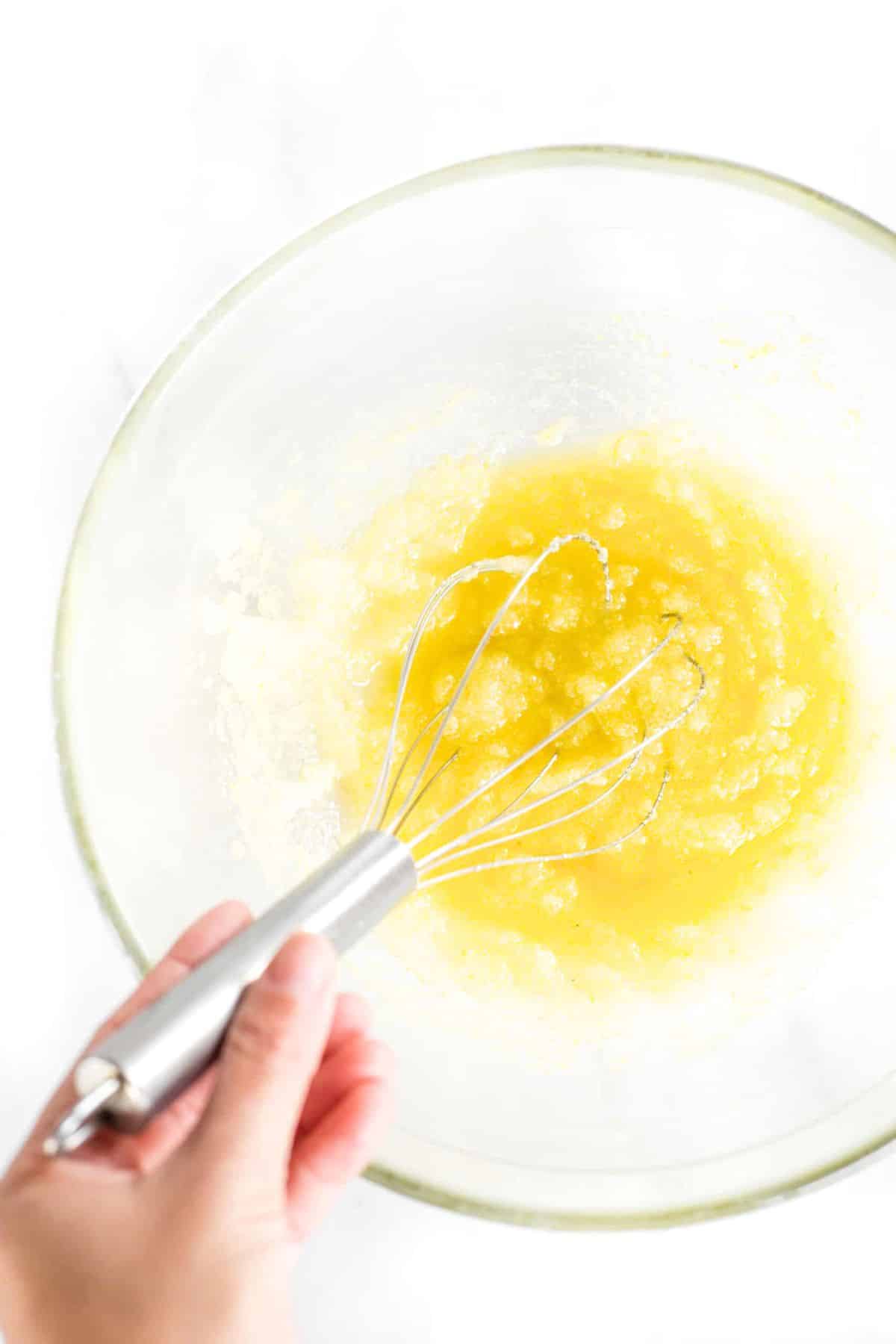
5. Combine Wet and Dry Ingredients
Add the flour mixture to the bowl with the wet ingredients and mix well until you get a homogeneous pale yellow batter.
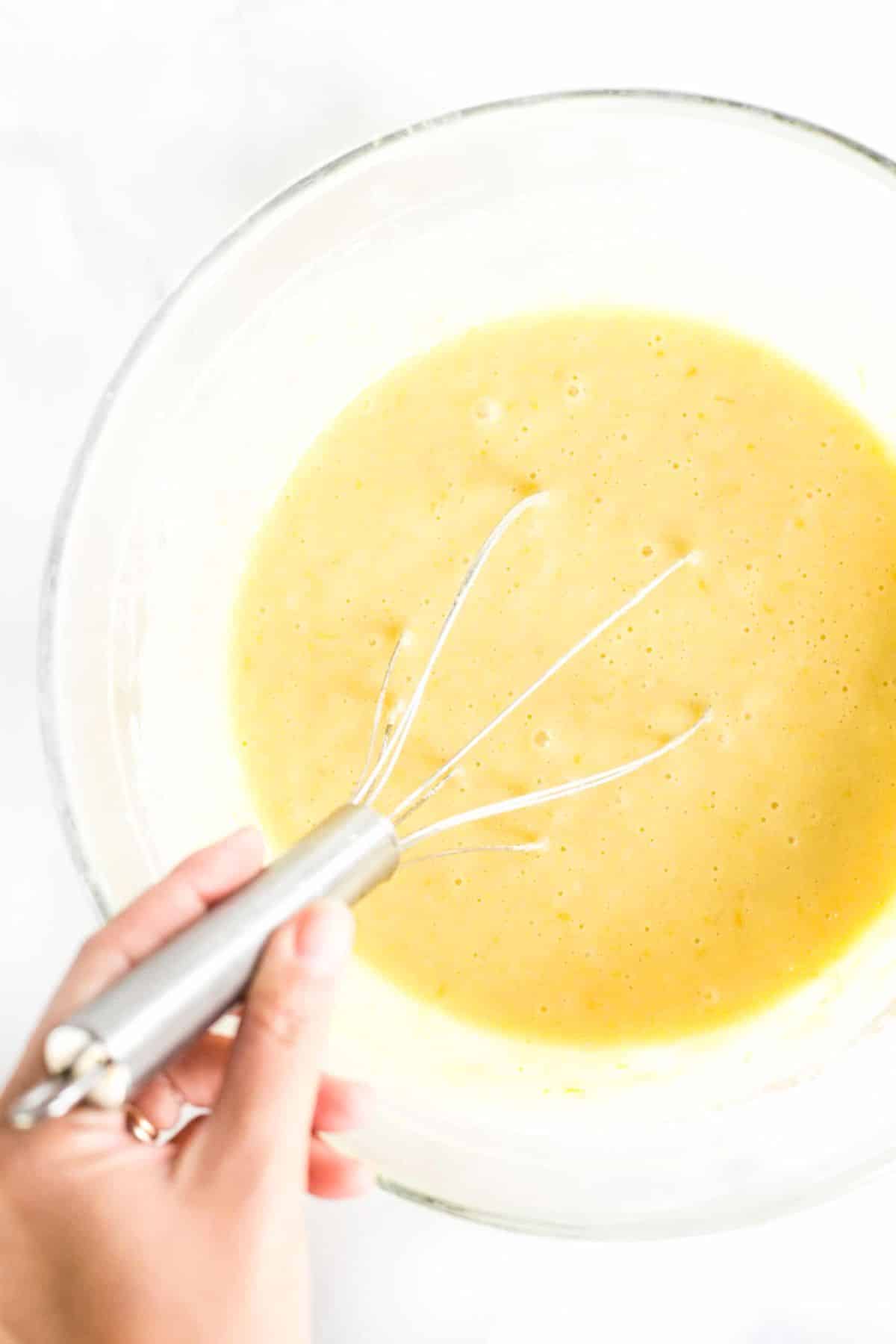
6. Transfer Batter to Pan
Transfer the cake batter to the prepared pan.
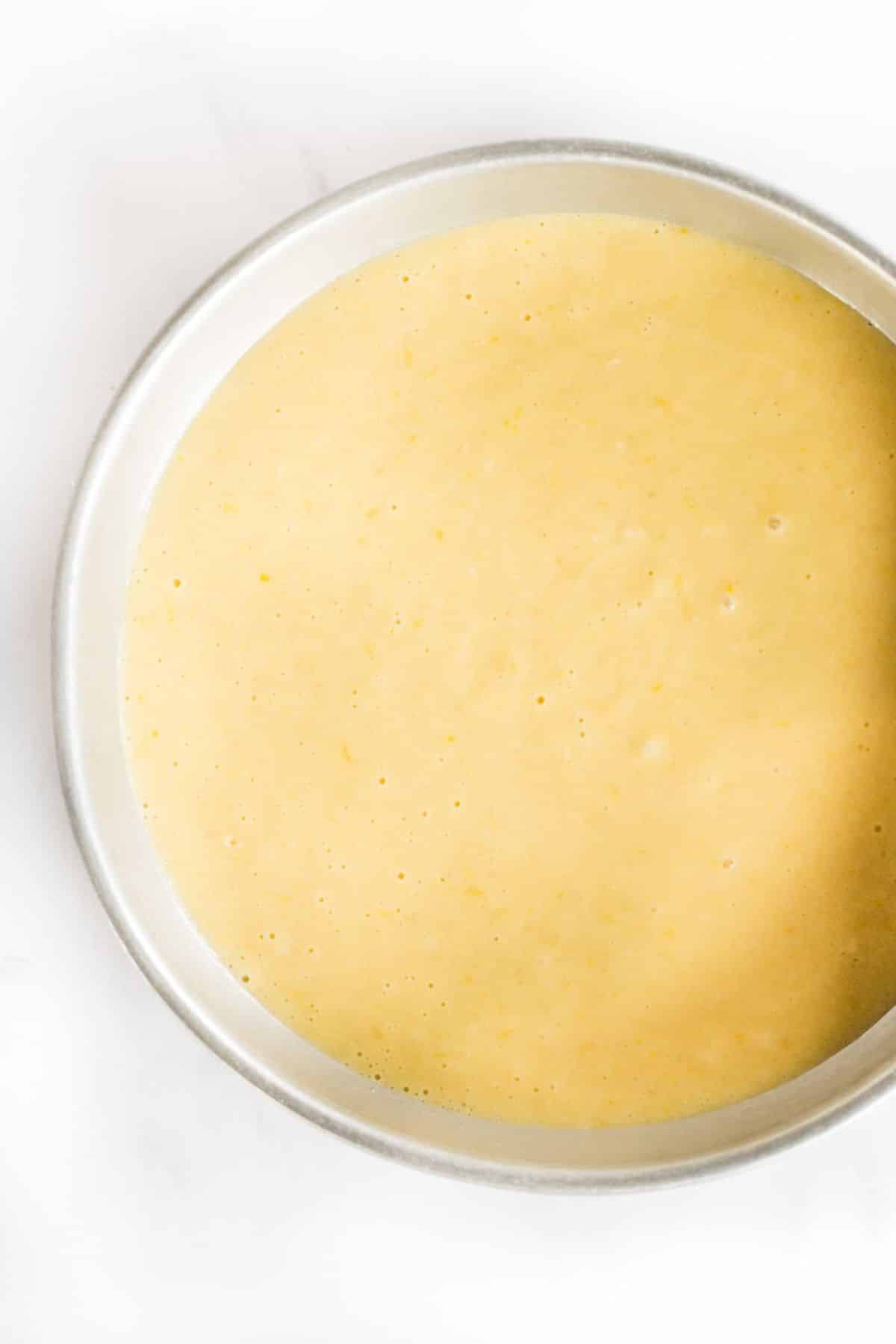
7. Bake Until Golden Brown
Bake batter for 45 to 50 minutes until golden brown on top and a toothpick inserted in the middle comes out clean.
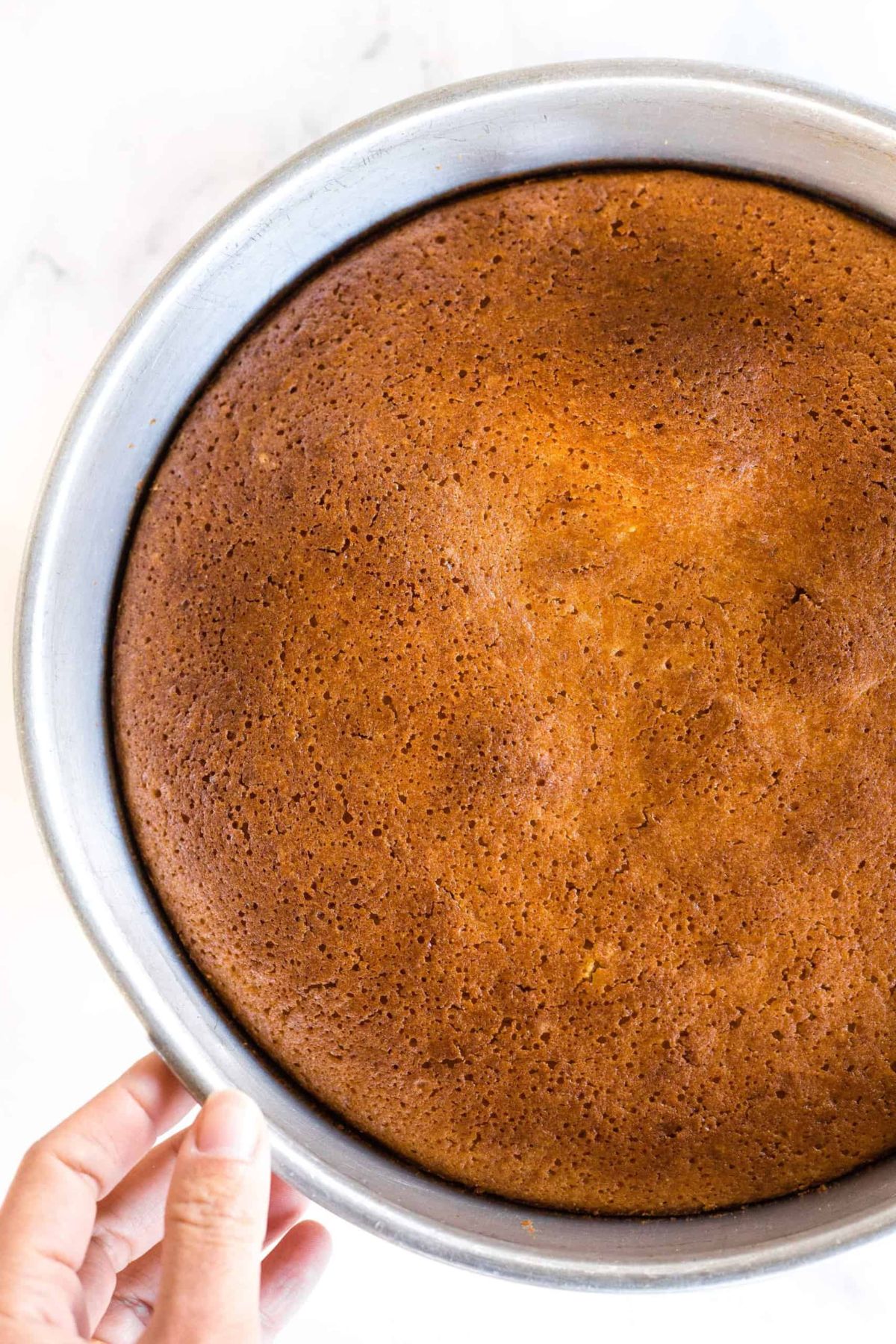
8. Let Cool Before Moving
Let the gluten free olive oil cake cool for at least 10-15 minutes in the pan at room temperature before running a butter knife along the sides of the pan. Then remove the cake from the pan and letting it full cool on a wire rack.
9. Prepare Frosting
If you wish, prepare the frosting by combining the melted coconut oil, powdered sugar, and lemon juice in a medium bowl. Mix well to combine until you get a thick frosting.
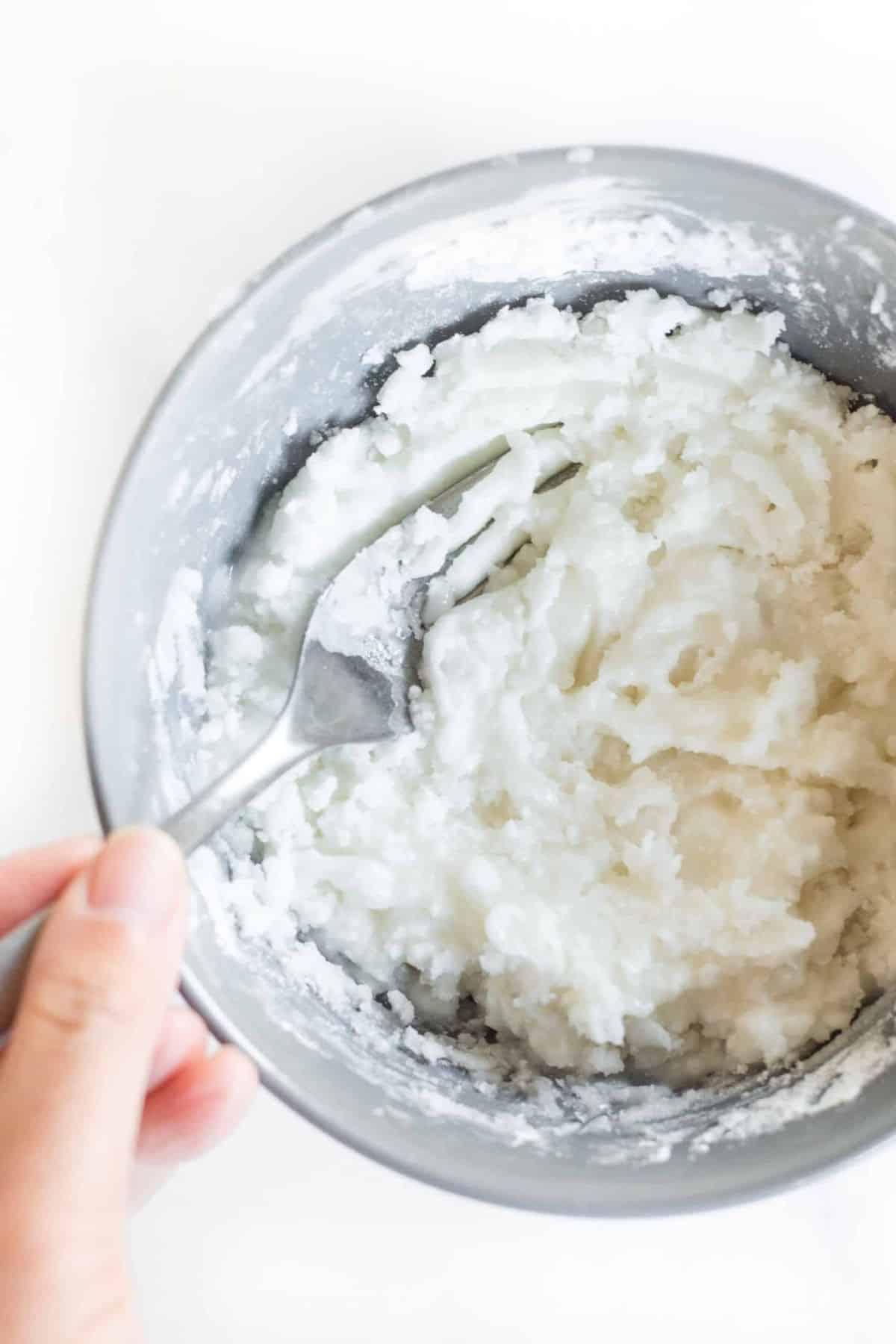
10. Spread Frosting Over Cooled Cake
Spread the lemon frosting evenly over the top of the gluten-free olive oil cake and then sprinkle lemon zest on top of the frosting.
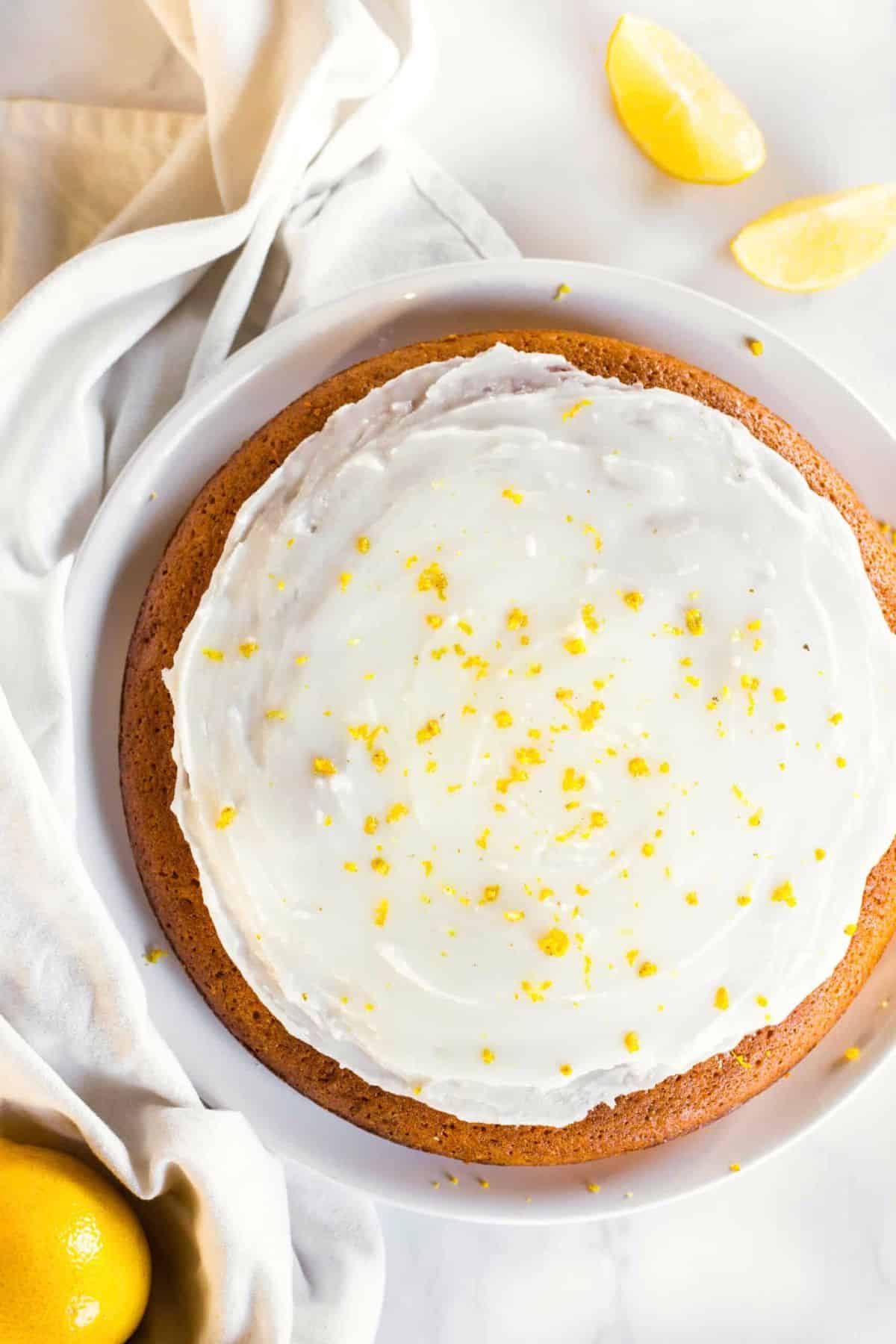
Dish by Dish Tips/Tricks:
- Make a Loaf Cake: If you prefer, you can make a loaf instead of a round cake. Simply bake the batter in a 9″ x 5″ loaf pan at 350F for 45 to 50 minutes, or until a toothpick inserted in the middle comes out clean. Once the loaf is cooled, spread the frosting on top and sprinkle with lemon zest.
- Swap Out Lemon for Other Citrus: Feel free to swap out the lemon juice and zest with orange juice and zest, or grapefruit juice and zest, or blood orange juice and zest.
- Olive Oil Flavor: I’ve read in a few places that the trick to prevent the olive oil from overwhelming other flavors is to use one that is milder in taste. I find that sometimes, the cheaper olive oils, usually labeled “light olive oil”, which are made from refined olive oil, have the most neutral taste. So if that helps, go for it, unless you like your olive oil to taste a little stronger. In my opinion, the most important result of using olive oil, is that olive oil’s vitamin E content naturally keeps baked goods fresh and moist.
Recipe FAQs:
To store, cover the cake with plastic wrap or place in an airtight container and then store in the refrigerator for up to 5 days.
Yes you can. Simple wrap the gf olive oil cake in various layers of plastic wrap and keep in the freezer for up to 2 months. Let the frozen cake thaw overnight in the refrigerator before slicing and enjoying.
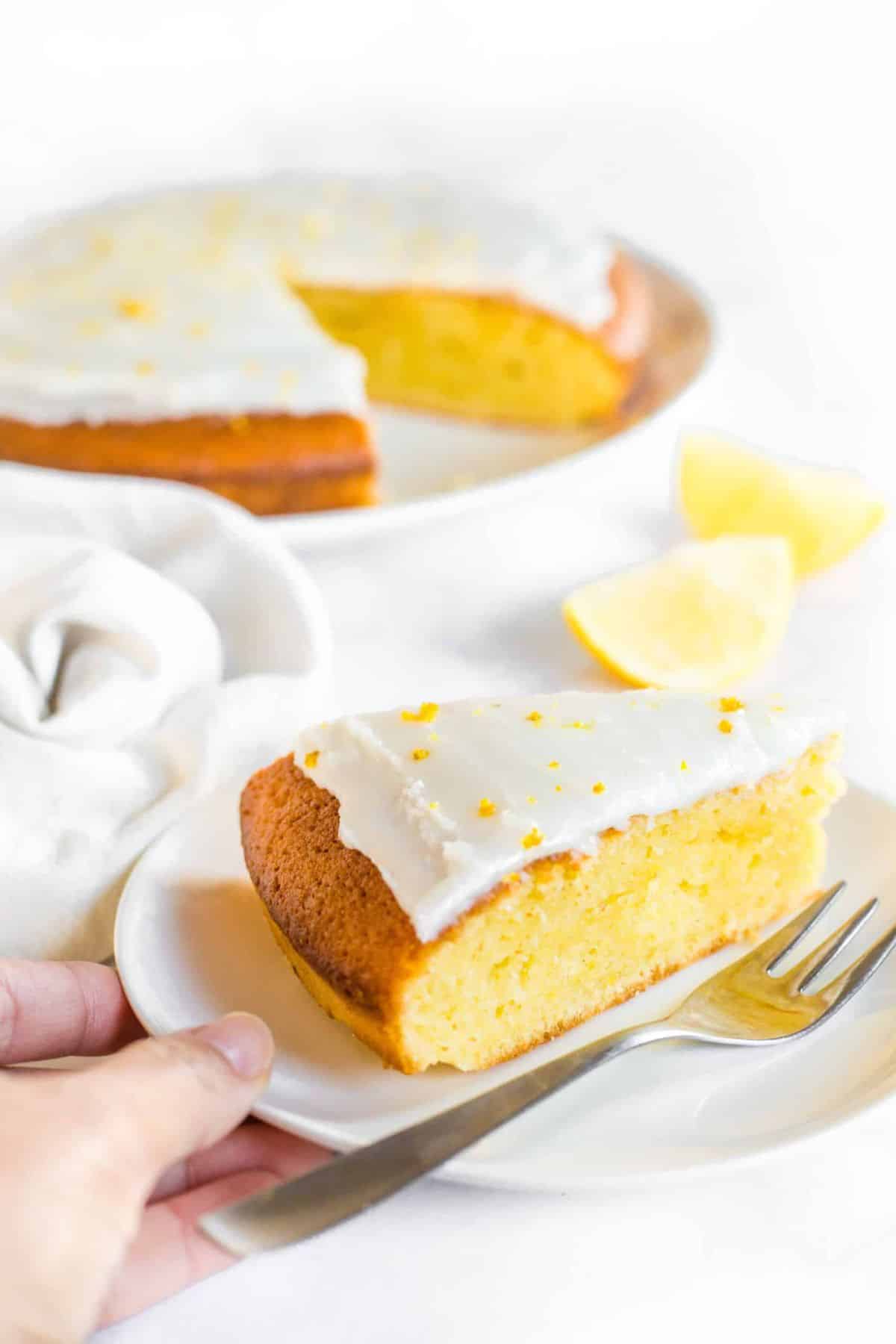
Gluten-Free Lemon Recipes to Enjoy:
- Moist Lemon Bundt Cake (Gluten-Free, Dairy-Free)
- Lemon Poppy Seed Bread (Gluten-Free, Dairy-Free)
- Easy Lemon Curd (Gluten-Free, Dairy-Free)
- Lemon Blueberry Cake (Gluten-Free, Dairy-Free)
- Lemon Blueberry Bread (Gluten-Free, Dairy-Free)
- Lemon Crinkle Cookies (Gluten-Free, Dairy-Free)
Gluten-Free Cakes to Bake:
Other Lemon Desserts You’ll Love:
- Lemon Blueberry Bread (Gluten-Free, Dairy-Free)
- Lemon Yogurt Cake (Gluten-Free, Dairy-Free Option)
- Lemon Poppy Seed Bread (Gluten-Free, Dairy-Free)
- Easy Lemon Muffins (Gluten-Free, Dairy-Free)
- Easy Lemon Curd (Gluten-Free, Dairy-Free)
- Lemon Meringue Pie (Gluten-Free, Dairy-Free)
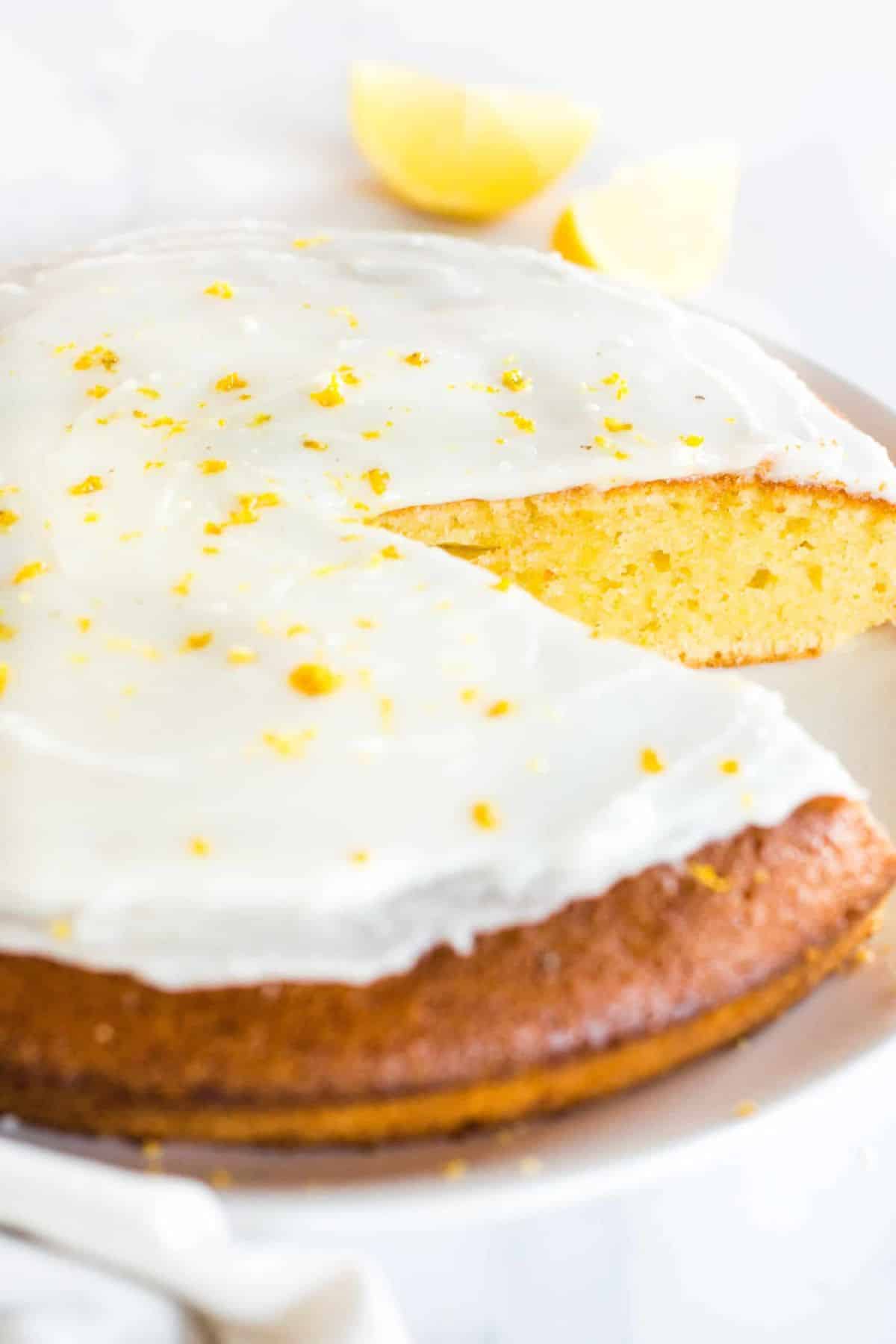
P.S. If you try this recipe, I’d love for you to leave a star rating below, and/or a review in the comment section further down the page. I always appreciate your feedback. Be sure to check out my entire Recipe Index for all the recipes on the blog. You can also follow me on Pinterest, Facebook or Instagram! Sign up for my Email List to get fresh recipes in your inbox each week!
Print
Gluten-Free Lemon Olive Oil Cake (Dairy-Free)
- Total Time: 1 hour 5 minutes
- Yield: 12 servings 1x
- Diet: Gluten Free
Description
This gluten-free lemon olive oil cake is moist, tender and fragrant with citrus lemon, and covered in a lemon icing to make it more decadent (optional, but highly recommended!). Perfect for breakfast, dessert, or an anytime sweet snack! Totally dairy-free too, but no one would care! Go bake this gluten-free olive oil cake today!
Ingredients
For the Lemon Olive Oil Cake:
- 1 1/4 cup gluten-free all-purpose flour
- 1/2 cup brown rice flour
- 1/2 teaspoon xanthan gum (omit if your gluten-free flour blend already has it)
- Pinch of salt
- 1 1/2 teaspoons baking powder
- 3/4 cup olive oil
- 1 cup sugar
- 2 tablespoons freshly grated lemon zest (zest of 2 lemons)
- 3 large eggs, beaten
- 3/4 cup unsweetened almond milk
- 2 tablespoons fresh lemon juice
For the Lemon Frosting (Optional):
- 1/4 coconut oil, melted
- 2 cups powdered sugar
- 2 tablespoons fresh lemon juice
- 2 teaspoons freshly grated lemon zest
Instructions
- Preheat and Grease: Preheat the oven to 350F and grease and line the bottom of a 9″ round cake pan or springform pan with parchment paper.
- Whisk Dry Ingredients: In a medium bowl, sift the gluten-free all-purpose flour, brown rice flour, xanthan gum, salt and baking powder. Whisk well to combine.
- Beat Oil, Sugar and Zest: In a large mixing bowl, combine the oil, sugar and lemon zest. Beat well until light and fluffy.
- Add Remaining Wet ingredients: Add the eggs, almond milk and lemon juice, and whisk well to combine.
- Combine Dry and Wet Ingredients: Add the flour mixture to the bowl with the wet ingredients and mix well until you get a homogeneous pale yellow batter.
- Transfer Batter to Pan: Transfer the gluten-free olive oil cake batter to the prepared cake pan.
- Bake Until Golden Brown: Bake batter for 45 to 50 minutes until golden brown on top and a toothpick inserted in the middle comes out clean.
- Let Cool Before Removing: Let the lemon olive oil cake cool for at least 10-15 minutes in the pan before removing it from the pan and spreading lemon frosting or glaze on top if desired.
- Slice and Enjoy: Now go on and slice and enjoy this delicious cake!
- Prepare Frosting: If you wish, prepare the frosting by combining the melted coconut oil, powdered sugar, and lemon juice in a medium bowl. Mix well to combine until you get a thick frosting.
- Spread Frosting Over Cake: Spread the lemon frosting evenly over the fully-cooled lemon olive oil cake and then sprinkle lemon zest on top of the frosting.
Notes
Gluten-Free All-Purpose Flour: I recommend using a good-quality gluten-free all-purpose flour blend that is made up of lighter flours/starches (such as rice flour, tapioca starch, corn starch or potato starch) to ensure a lighter final texture. I do NOT recommend using a gluten-free flour blend that is made up of heavier flours (such as a garbanzo bean flour) as that will result in a denser final texture.
Brown Rice Flour: I like adding a bit of brown rice flour for a bit more fiber and texture.
Xanthan Gum: Xanthan gum is the replacement for gluten in gluten-free flours, and helps to better bind the ingredients together. Make sure to add it in if your gluten-free flour blend doesn’t already include it.
Baking powder: Since baking powder is the only leavening agent that will be used, make sure to add it in. If you are Celiac or gluten-intolerant, make sure to use certified gluten-free baking powder.
Olive Oil: I used extra virgin olive oil, but you can use a lighter olive oil if you don’t want to taste to be overpowering.
Sugar: I used white sugar, but you can also use light brown sugar if you prefer. If you are diabetic or insulin-resistant, I highly recommend using granulated monkfruit sweetener (a 1:1 sugar substitute that is zero glycemic index and will not raise your blood sugar.)
Lemon Zest: Using freshly grated lemon zest will really make the citrus lemon taste shine.
Eggs: Eggs help to bind the ingredients together. I have not tried making this recipe without eggs, so I don’t know how it would turn out. However, if you are allergic to eggs, you can try using acquafaba or an egg-replacer instead.
Almond Milk: I like using an unsweetened version of my homemade almond milk, but you can also use another non-dairy milk (such as cashew milk, rice milk, tigernut milk, light coconut milk). Alternatively, if you are not lactose-intolerant, go ahead and use normal milk instead.
Lemon Juice: Fresh lemon juice will beat bottled lemon juice anytime, and since you need fresh lemons for the lemon zest, I recommend using freshly squeezed lemon juice.
Coconut Oil: I recommend using refined coconut oil (which has a more neutral taste) instead of extra virgin coconut oil (which has a stronger coconut smell and flavor). You may also use melted vegan butter instead. Alternatively, if you are not lactose-intolerant, feel free to use melted butter as well.
Powdered Sugar: Make sure to use powdered sugar (also known as icing sugar or confectioners’ sugar) as it is super fine and results in a creamy frosting. If you are diabetic or insulin-resistant, I recommend using powdered monkfruit sweetener (a 1:1 powdered sugar substitute that is zero glycemic index and will not raise your blood sugar).
Storing: To store, cover the cake with plastic wrap or place in an airtight container and then store in the refrigerator for up to 5 days.
This post was originally published in 2013, but has been republished to include clearer step-by-step instructions as well as recipe notes and substitutions.
- Prep Time: 10 mins
- Assembly Time: 5 mins
- Cook Time: 50 mins
- Category: Desserts
- Method: Baking
- Cuisine: American

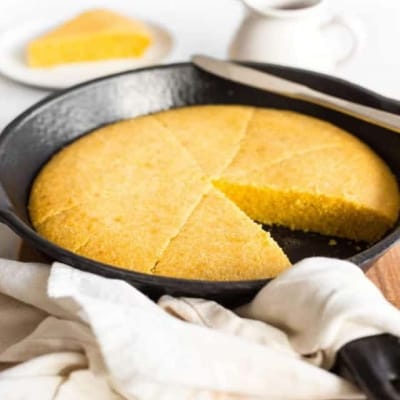

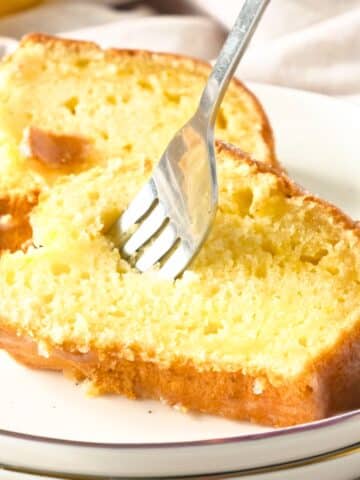
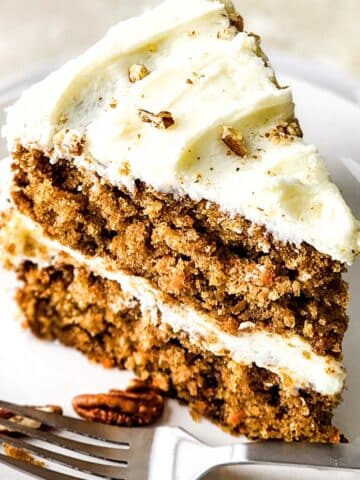
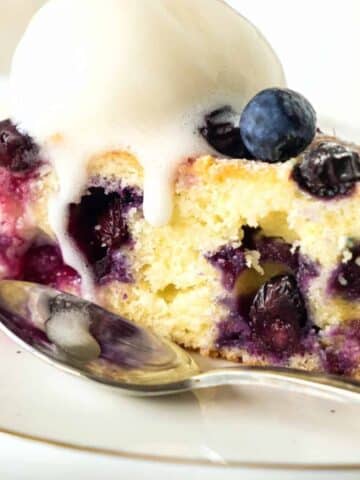









Hello Felicia!
Your post reminded me of those times when I baked my lemon or orange flavored cake and enjoying the citrusy aroma in the kitchen and eating the cake with family.
I need to go make another one soon to relive that wonderful aromatic atmosphere and the yummy taste in my mouth!
Love,
Mum
Yes mummy, go and make this cake (you can use orange zest and juice instead) 😉
It seems like pound cake is your “madeleine” heehee. Mine is definitely my mom’s meatballs and homemade tomato sauce. Every time I go to visit her in Florida she makes them for me, and I feel like I’m back in my childhood. <3 I'll have to try this olive oil cake out in 2014 since I've heard such lovely things about working with it and it looks delightful! 😀
Jess, try it! More olive oil, less butter!! 2014 resolution, haha! Have a great time at Christmas & New Year’s my dear friend!
Anything with lemon and I’m in. The classic pound cake will always have a place in my kitchen.
Great recipie
Hi tracy!! thanks for stopping by! It’s always lovely to find another fellow pound-cake fan, and you’re right, lemon puts such a delicate and fresh twist to all foods that I’ve become a sucker for all lemon recipes too!! Happy weekend tracy!
Hi Felicia,
Whilst olive oil is a healthy oil to consume, I am just wondering whether when olive oil is put under such extreme heat as in baking, will the healthy property of the oil be diminished or somewhat changed?
In most cases, it is recommended that Olive Oil be consumed neat as in salad or dip. In cooking, low heat is recommended such stir-fry. Any thoughts on this? Have a great weekend!
Hello mummy! Good question. I never thought about whether cooking olive oil would destroy its nutrients and good properties until you asked…so I did a quick google search… and found the answer on Cooking Light: http://www.cookinglight.com/eating-smart/nutrition-101/nutrition-myths-facts-00412000067116/page18.html.
In the link, it states that “Truth Even delicate extra-virgin oils can take the heat without sacrificing nutrition. First of all, heart-healthy mono-unsaturated fats aren’t unfavorably altered by heat. They survive a sauté intact. Now, research is showing that other plant-based compounds—the elements that likely give olive oils their complex flavor profiles as well as other healthful properties—can also stand up to standard cooking procedures. They’re surprisingly stable, as long as the oil isn’t heated past its smoking point, which for extra-virgin olive oil is pretty high—about 405°F.”
i didn’t realize that there were those who were so against the use of olive oil in sweets. interesting.
i have thought of this bread since making it, and what with citrus being in season right now, it’s the perfect way to use them. oranges, limes, maybe even grapefruit!
thanks so much for letting me know how it turned out for you!
Yeah, i didn’t realize so many were against it, almost as many as those who were for olive oil being used in sweets! Now, grapefruit sounds like a very delicious way to use this recipe again..! I’m also thinking chocolate..